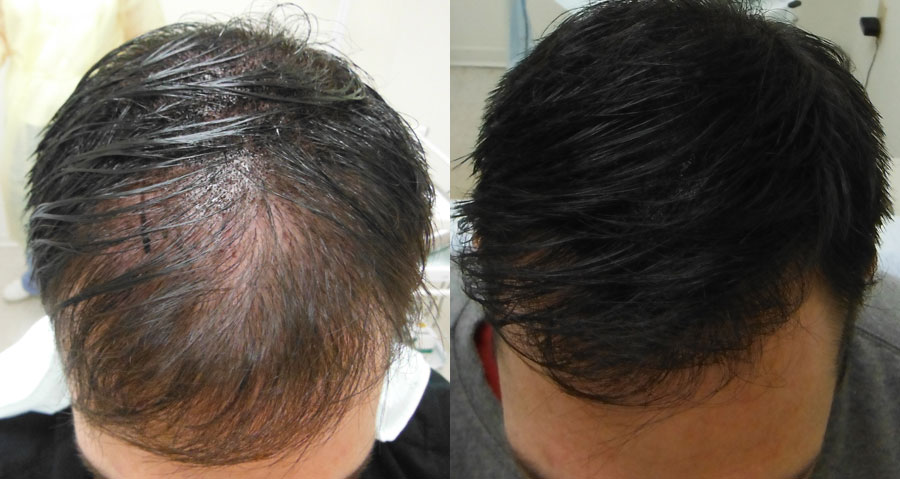Scalp micropigmentation is a procedure that creates an illusion of fuller hair. This concept is similar to the microblading of brows but they both follow different methods for implanting the pigments.
Microblading is done using a manual blade while micropigmentation is performed using an electric device. They use this device to penetrate the skin of your scalp which is thicker compared to the one under the eyebrows.
How Does Scalp Micropigmentation Work?
In this method, the practitioner creates tiny layered dots of different hues of black to give a shadow effect on your scalp. This style is known as pointillism which is used to create depth. A skilled person works to ensure that the dots look like a natural follicle and blend inside the complexion.
This procedure is useful for people having hair fall due to different reasons such as cancer, thinning of hair, alopecia or male and female pattern baldness.
Is the Process Painful?
It depends on your pain tolerance. Before doing the procedure, the practitioner will apply a topical numbing agent to your scalp. You will experience some discomfort so prepare yourself for it. But the level of the discomfort will depend on your ability to tolerate the pain.
People who have scalp acne or sensitive skin should avoid this procedure during the breakout as it will be difficult to apply the pigment in that area. If you have keloids which is darkening of the skin then your SMP is not suitable for you.
You should do proper research in finding the skilled SMP practitioner. Once you decide whom to go with, you will have your first consultation during which the consultant will brief you about what you should expect and how you should prepare yourself before the procedure.
General Guidelines
Some of the general guidelines are:
- You should take a shower before each treatment. You will not able to wet your scalp for 4 days after the treatment.
- Each treatment takes 4 – 5 hours so you will have to patiently sit.
- The number of treatments will depend on the area of your scalp. Even for a small area, you will require 3 – 4 treatments and you will need the treatment for a longer time for layering colors.
- Every treatment will be scheduled a few weeks apart.
- In the weeks between the treatment, you should avoid going for swimming, use steam or sauna or take hot showers.
- Avoid exposing your scalp in the sun for 4 days. On the 5th day, expose our scalp for 45 minutes to 1 hour only if you have a fair skin. But you should know that the lesser you expose the treated area, the more you will able to retain the treatment.
- After the final treatment, you should avoid swimming and saunas for 28 days, avoid exposing your scalp to the sun for 28 days, avoid heavy exercise for 5 days and regularly moisturize your scalp from the 5th day.
What is the cost of this procedure and how long does it take?
The price of the SMP procedure depends on the area of the scalp that needs to be treated. Each treatment is usually between $400 – $1000.
This treatment is semi-permanent and may last up to 8 years. The treated area will fade over time as the skin naturally exfoliates itself over time. The color will lighten but if incorrect pigment is used then there are chances that the color will change.
If you have dry skin then color can fade quickly as the pigmented skin tends to flake with the dry skin.
What are the risks involved?
There are a few risks involved in SMP treatment. This is not considered a tattoo but the tattoo ink penetrates deep inside the skin and is injected using a thicker needle. This can cause allergies because of certain components inside the pigmentation and there are also chances of infection.
How to find the right SMP practitioner?
There is no formal training required to become an SMP practitioner that is why it is very important to do a thorough research on finding the right and skilled SMP practitioner. You should make a visit to the treatment office before booking an appointment and find out if they have the below things to ensure you are in good hands.
- certification of SMP training
- license of body art practitioner
- county health permit
- Bloodborne pathogens certification
- clean and sterile environment
- use of gloves, masks, and tapes during treatment
- open packed needles that are opened in front of the clients
The licensing and general regulation will vary by state.
Besides this, you should ask the SMP practitioner about the number of appointments they schedule each day. This treatment is time-consuming and needs a lot of focus so if the practitioner is seeing more than 4-5 clients a day than its not a place you should go for.
You should also find out more about the practitioner’s background. This includes who trained them, how long they took the training and look them up on social media.
In this way, pick your SMP practitioner only if you are confident and your gut says the person is right for you.





